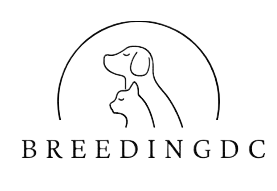Are you looking for a furry family member who will bring endless joy and companionship into your home? Look no further than the Labrador Retriever, a breed that has captured the hearts of dog lovers worldwide. Affectionately known as Labs, these four-legged friends have earned their reputation as one of the most beloved family dogs. Their unwavering loyalty, intelligent nature, and playful spirit make them an ideal choice for families seeking a loyal companion.
The Labrador Retriever’s history is deeply rooted in Canada, where they were originally bred as hardworking fishing companions. Their exceptional swimming abilities and keen intelligence made them invaluable assistants to fishermen. Over time, their versatility and gentle temperament led to their widespread popularity as family pets. Today, Labs are renowned for their adaptability, thriving in various environments, from bustling city apartments to spacious suburban homes.
One of the standout qualities of Labrador Retrievers is their friendly and affectionate nature. They form strong bonds with their human family members and are known for their unwavering loyalty. Labs are excellent companions for children, displaying endless patience and a playful demeanor that encourages hours of fun and games. These dogs have an innate ability to sense moods and provide comfort to their loved ones, making them a source of emotional support and joy.
In addition to their loving personalities, Labs are highly intelligent and trainable. They excel in obedience training and are often employed as service dogs, providing assistance to individuals with disabilities. Their intelligence and eagerness to please make them quick learners and highly responsive to commands. With consistent training and positive reinforcement, Labs can master a wide range of skills and become well-behaved, obedient family members.
Whether you’re seeking a playful companion for your children or a loyal friend who will be by your side through thick and thin, the Labrador Retriever is an exceptional choice. Their gentle nature, intelligence, and adaptability make them the ultimate family dog. So, if you’re ready to welcome a new furry family member into your home, consider opening your heart to a Labrador Retriever – a breed that promises a lifetime of love, loyalty, and endless tail wags.
When it comes to exercise and outdoor activities, Labs are the perfect companions. They have boundless energy and will enthusiastically join you on hikes, runs, or trips to the dog park. Swimming is a particular favorite for this breed, given their swimming prowess and love for water. Engaging in regular exercise with your Lab will not only keep them healthy and happy but also provide opportunities for bonding and strengthening your relationship.
The Labrador Retriever’s friendly demeanor extends beyond their own family. They are known for their sociability and get along well with other dogs and even cats. This makes them an excellent choice for households with multiple pets, as they can easily adapt and form harmonious relationships. Their social nature also makes Labs great ambassadors for the canine world, often acting as therapy dogs or ambassadors for dog-related causes.
Another advantage of owning a Labrador Retriever is their low-maintenance grooming needs. Their short, dense coat requires minimal upkeep, with regular brushing being sufficient to keep it in good condition. Labs shed moderately, and a consistent grooming routine can help manage this aspect. Their overall grooming requirements make them an excellent choice for families seeking a relatively fuss-free dog in terms of maintenance.
When considering adding a Labrador Retriever to your family, it’s essential to be prepared for their high energy levels and exercise needs. They thrive with daily physical and mental stimulation. Engaging in interactive games, training sessions, and providing plenty of opportunities for exercise will ensure your Lab remains healthy, happy, and well-behaved. A tired Lab is a content and relaxed companion.










